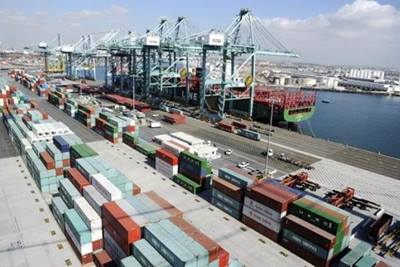The strategic implication of the withering away of the planned Trans Pacific Partnership (TPP) agreement could be India coming under pressure from China to ensure an early conclusion of the Regional Comprehensive Economic Partnership (RCEP) agreement negotiations.
India may be urged to hasten the process of firming up its market access commitments in RCEP negotiations, as the country, along with Indonesia, struggled to meet the standards of other negotiating partners. Progress in the RCEP negotiations has happened at a snail’s pace since it was officially launched in November 2012 and many blame it on India, as New Delhi has treaded cautiously in opening its economy further to China, with which it has record levels of deficit in goods trade — more than $52,696 million in 2015-16.
Indian industry is also wary of giving increased market access to China without careful consideration. Recently, the domestic steel industry bore the brunt of the influx of cheaper steel imports from China, which virtually forced smaller players to exit business. The threat of Chinese goods flooding the Indian market is evident from the fact that India resorted to imposing a number of WTO-compliant trade defence measures on China. As on December 31, 2016, India imposed 87 anti-dumping measures on China compared with China imposing less than 10 anti-dumping measures on India. Dubbed as former US President Barack Obama’s signature trade deal, the TPP reflected a US “pivot to Asia” in an apparent counter to China’s increasing diplomatic and commercial power across the globe. China will be quick to step into to any vacant space left by the US withdrawal, US Republican senator John McCain warned earlier.
You may also like to watch:
[jwplayer vffub1XP]
The demise of the TPP agreement however would not make much of a difference to India’s trade and investment prospects. Avijit Das, head, Centre for WTO Studies, IIFT, pointed out that a study conducted by the US think-tank Peterson Institute for International Economics (PIIE) concluded that impact on India’s trade and investments due to an operational TPP is virtually nil. He said that the US may pursue bilateral trade negotiations with the individual TPP member countries to extract more concessions from them. There is also a possibility of emergence of a multilateral deal on the WTO platform in future, particularly in the area of electronic commerce among the erstwhile TPP member countries, he added.
Japanese Prime Minister Shinzo Abe asserted that TPP minus the US is as good as dead. Global trade dynamics will definitely see some alteration with the TPP now gone. Biswajit Dhar, a senior trade economist, suggest the spotlight may be now on the RCEP negotiations and pressure may build up on India to accede to higher market access requests from the RCEP partner countries. Also, RCEP member nations Japan, Australia and New Zealand, who were part of the now abandoned TPP, may support China’s stand. This might be a logical next step for these countries in the light of the fact that global trade has been slack for quite some time now and further liberalisation is imperative for them to lift trade levels and perhaps put some check on protectionism in global trade.
Again, according to news reports, bilateral FTAs of India with countries like Japan and South Korea have not yield much in terms of growth in trade volumes. In 2015-16, India’s trade deficit in goods with South Korea stood at $9524.48 million, and with Japan it was $5187.55 million. This will desist India from giving further concessions to these countries. Additionally, Japan and South Korea have also been taking a tough stance on intellectual property issues in the RCEP negotiations.
Dibyajyoti Bhattacharjee
